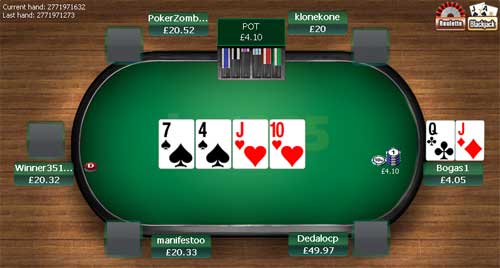9 Handed Poker Discover how to master 9 handed poker with strategic insights, tips for tight and loose games, and the best ways to adjust your play at full-ring tables.
Poker comes in many forms, but one of the most traditional and strategically complex formats is 9 handed poker. Also known as full-ring poker, this setup features nine players at the table, leading to more conservative playstyles and deeper strategic layers. Whether you’re new to poker or transitioning from short-handed games, understanding the nuances of 9 handedpoker can elevate your gameplay and bankroll.
What Is 9 Handed Poker?
9 handed poker refers to a table setup with nine players, typically seen in cash games and certain tournament structures. It contrasts with 6-max (short-handed) and heads-up formats, requiring more patience and tighter preflop ranges due to the increased number of opponents.
Table Positions Matter More 9 Handed Poker
Position is critical in any poker game, but in 9 handed oker, it becomes a central part of your decision-making process. Here’s a quick breakdown of positions:
-
Early Position (EP): UTG, UTG+1, UTG+2
-
Middle Position (MP): MP1, MP2
-
Late Position (LP): Cutoff, Button
-
Blinds: Small Blind (SB), Big Blind (BB)
In early positions, you’re acting before most of the table, so your hand selection should be much tighter. As you move toward the button, you can widen your range and be more aggressive.
Tight Is Right – But Not Always 9 Handed Poker
In full-ring games, tight-aggressive (TAG) play is often the most profitable style. Because players are more likely to enter pots with strong hands, bluffing becomes riskier, and loose play can be punished severely.
However, against overly tight opponents, skilled players can exploit this with selective aggression — stealing blinds more often from late position, and occasionally 3-betting light against predictable players.
Preflop Strategy for 9 Handed Poker
The golden rule for preflop play in 9 handedpoker is discipline. Here are some general starting hand guidelines:
-
Early Position: AA–TT, AK, AQ
-
Middle Position: Add AJs, KQs, 99
-
Late Position: Add suited connectors, low pairs, and suited aces
-
Blinds: Defend selectively, especially if your table is aggressive
Limping should be rare in full-ring games unless it’s part of a trapping strategy or part of a multiway pot where pot odds justify it.
Postflop Adjustments
In 9 handedpoker, multiway pots are more common, which means:
-
Top pair is not always good – be cautious with weak kickers
-
Position is power – bet for value when in position, and check/fold more often when out of position
-
Bluffing frequency decreases – you’ll need stronger reads and better board textures to make successful bluffs
Also, continuation betting (c-betting) should be more selective; players in 9 handed games are generally stickier and less likely to fold to a single bet.
Tournament vs. Cash Game Considerations
In tournament play, blinds increase and players bust out, often transitioning from 9 handed to 6 handed and eventually heads-up. Start tight, and loosen up as the table shortens.
In cash games, stacks are deeper, and each decision carries more weight. Be prepared for longer sessions and more grind-heavy gameplay.
Final Thoughts
9 handedpoker is a foundational format that rewards patience, discipline, and deep strategic thinking. While it may feel slow-paced compared to shorter formats, it offers a rich experience where understanding table dynamics, reading opponents, and mastering position can lead to consistent profits.
Whether you’re grinding online or playing in a live poker room, sharpening your skills in full-ring games will give you a well-rounded edge across all poker variants.

